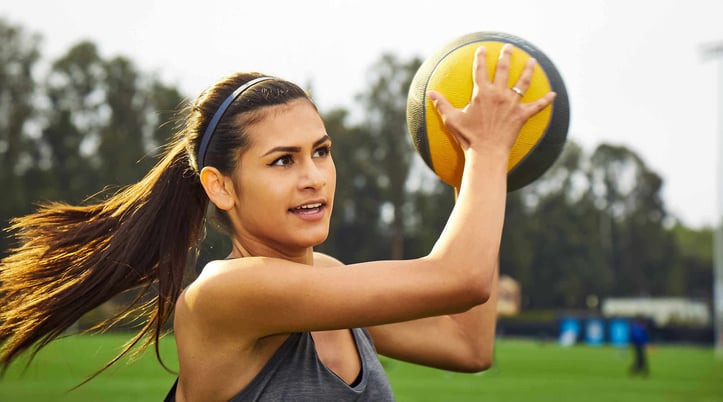
Introduction
Living with diabetes doesn't mean you have to limit your physical activity. In fact, with the right exercise programming, you can manage your condition effectively and improve your overall health. This blog post will provide you with a comprehensive guide to safe and effective exercise programming for diabetes, covering everything from training principles to practical tips and a sample one-week training plan.
Understanding Diabetes and Exercise
Diabetes is a chronic condition that affects the body's ability to regulate blood sugar levels. Exercise plays a crucial role in managing diabetes as it helps improve insulin sensitivity, lowers blood sugar levels, and reduces the risk of complications such as heart disease and nerve damage. However, it's important to approach exercise programming for diabetes with caution and under the guidance of a healthcare professional or a qualified fitness trainer.
Training Principles for Diabetes
1. Progressive Overload
The principle of progressive overload states that in order to see improvements in strength, endurance, or other fitness components, you need to gradually increase the intensity, duration, or frequency of your exercise over time. For individuals with diabetes, this means starting with low-intensity exercises and gradually increasing the difficulty as your body adapts. This helps prevent overexertion and reduces the risk of hypoglycemia (low blood sugar) or hyperglycemia (high blood sugar).
2. Specificity
Specificity refers to the idea that the body adapts to the specific demands placed on it. When designing an exercise program for diabetes, it's important to choose exercises that target the specific muscles and energy systems that are most relevant to your goals. For example, if your goal is to improve insulin sensitivity, you might focus on exercises that involve large muscle groups, such as walking, cycling, or swimming.
3. Variety
Incorporating variety into your exercise program is important for several reasons. First, it helps prevent boredom and keeps you motivated to stick with your routine. Second, it allows you to target different muscle groups and energy systems, which can help improve overall fitness and reduce the risk of injury. Finally, variety can help prevent plateaus, which occur when your body adapts to a particular exercise routine and stops making progress.
4. Rest and Recovery
Rest and recovery are just as important as exercise when it comes to managing diabetes. During exercise, your body breaks down muscle tissue and uses energy stores. In order for your body to repair and grow stronger, it needs time to rest and recover. This means getting enough sleep, eating a balanced diet, and taking rest days as needed. It's also important to listen to your body and not push yourself too hard, especially if you're feeling tired or experiencing any symptoms of hypoglycemia or hyperglycemia.
Unique Insights for Diabetes Exercise Programming
1. Tailoring Your Program to Your Goals and Abilities
One of the most important things to consider when designing an exercise program for diabetes is your individual goals and abilities. For example, if you're new to exercise or have any underlying health conditions, you might need to start with a more conservative program and gradually increase the intensity as you get stronger. On the other hand, if you're an experienced athlete or have a higher fitness level, you might be able to tolerate a more challenging program. It's also important to consider your personal preferences and interests when choosing exercises. If you enjoy a particular activity, you're more likely to stick with it and make it a part of your regular routine.
2. Monitoring Your Blood Sugar Levels
Monitoring your blood sugar levels before, during, and after exercise is essential for managing diabetes. This allows you to adjust your exercise intensity and duration as needed to prevent hypoglycemia or hyperglycemia. It's also important to carry a source of fast-acting carbohydrates, such as glucose tablets or fruit juice, with you during exercise in case you experience any symptoms of hypoglycemia. If you're using insulin or other medications to manage your diabetes, it's important to talk to your healthcare provider about how to adjust your medication dosage before, during, and after exercise.
3. Incorporating Strength Training
Strength training is an important component of any exercise program, but it's especially important for individuals with diabetes. Strength training helps build muscle mass, which can increase insulin sensitivity and improve blood sugar control. It also helps improve bone density, which can reduce the risk of fractures and other complications associated with diabetes. When incorporating strength training into your exercise program, it's important to start with light weights and gradually increase the intensity as you get stronger. It's also important to focus on proper form and technique to prevent injury.
4. Managing Your Diet
In addition to exercise, managing your diet is an important part of managing diabetes. A balanced diet that is rich in fruits, vegetables, whole grains, lean proteins, and healthy fats can help control blood sugar levels, reduce the risk of complications, and improve overall health. It's also important to monitor your carbohydrate intake and choose complex carbohydrates, such as whole grains and vegetables, over simple carbohydrates, such as white bread and sugary drinks. If you're using insulin or other medications to manage your diabetes, it's important to talk to your healthcare provider about how to adjust your diet to avoid hypoglycemia or hyperglycemia.
Sample One-Week Training Plan for Diabetes
The following is a sample one-week training plan for diabetes that incorporates a variety of exercises to improve cardiovascular health, strength, and flexibility. This plan is designed for beginners to intermediate exercisers and can be modified to suit your individual goals and abilities.
Monday: Cardio and Strength Training
- 30 minutes of brisk walking or cycling
- 20 minutes of strength training, focusing on large muscle groups such as the legs, back, and chest. Exercises might include squats, lunges, push-ups, and rows.
- 10 minutes of stretching
Tuesday: Rest or Active Recovery
- Take a day off from exercise or engage in light activity, such as yoga or stretching, to allow your body to recover.
Wednesday: Cardio and Core Training
- 30 minutes of swimming or water aerobics
- 20 minutes of core training, focusing on exercises that strengthen the abdominal and back muscles. Exercises might include planks, crunches, and Russian twists.
- 10 minutes of stretching
Thursday: Rest or Active Recovery
- Take a day off from exercise or engage in light activity, such as yoga or stretching, to allow your body to recover.
Friday: Cardio and Strength Training
- 30 minutes of running or jogging
- 20 minutes of strength training, focusing on smaller muscle groups such as the arms, shoulders, and calves. Exercises might include bicep curls, tricep dips, shoulder presses, and calf raises.
- 10 minutes of stretching
Saturday: Rest or Active Recovery
- Take a day off from exercise or engage in light activity, such as yoga or stretching, to allow your body to recover.
Sunday: Cardio and Flexibility Training
- 30 minutes of cycling or elliptical training
- 20 minutes of flexibility training, focusing on exercises that stretch the major muscle groups. Exercises might include static stretches for the legs, back, chest, and shoulders.
- 10 minutes of relaxation exercises, such as deep breathing or meditation.
Frequently Asked Questions (FAQ)
1. Can I exercise if I have diabetes?
Yes, exercise is generally safe and beneficial for individuals with diabetes. However, it's important to talk to your healthcare provider before starting any new exercise program to make sure it's safe for you and to get any necessary recommendations or precautions.
2. How often should I exercise?
The American Diabetes Association recommends that individuals with diabetes engage in at least 150 minutes of moderate-intensity aerobic exercise, such as brisk walking, cycling, or swimming, per week. It's also important to incorporate strength training exercises at least twice per week to build muscle mass and improve insulin sensitivity.
3. What should I eat before and after exercise?
It's important to eat a balanced meal or snack before and after exercise to help maintain stable blood sugar levels. A good pre-exercise snack might include a piece of fruit, a handful of nuts, or a small serving of yogurt. A good post-exercise snack might include a protein shake, a sandwich, or a bowl of cereal. It's also important to drink plenty of water before, during, and after exercise to stay hydrated.
4. What should I do if I experience hypoglycemia or hyperglycemia during exercise?
If you experience hypoglycemia (low blood sugar) during exercise, stop exercising immediately and eat a source of fast-acting carbohydrates, such as glucose tablets or fruit juice. If you experience hyperglycemia (high blood sugar) during exercise, stop exercising and check your blood sugar level. If your blood sugar level is high, you might need to take a break from exercise and drink plenty of water to help lower your blood sugar level.
5. Can I exercise if I have any complications associated with diabetes?
If you have any complications associated with diabetes, such as nerve damage, kidney disease, or eye problems, it's important to talk to your healthcare provider before starting any new exercise program. Your healthcare provider can help you determine what types of exercise are safe for you and what precautions you need to take to avoid any complications.
Conclusion
Exercise is an important part of managing diabetes, but it's important to approach it with caution and under the guidance of a healthcare professional or a qualified fitness trainer. By understanding the training principles for diabetes, tailoring your program to your goals and abilities, monitoring your blood sugar levels, incorporating strength training, and managing your diet, you can safely and effectively exercise to manage your condition and improve your overall health. Remember to listen to your body, take rest days as needed, and have fun! Start incorporating these tips into your exercise routine today and see the difference for yourself.

Fit vs Fat: Decoding Health's True Ruler

Pump Up Your Heart: Science-Driven Weight Loss

Wellness Technology: Your Path to Sustainable Weight Loss

A Sensible Guide to Dietary New Year's Resolutions

Prevent Shoulder and Rotator Cuff Injuries with Corrective Exercises

Overcome Fitness Plateaus: 4 Tips for Success

10 x 10 Thanksgiving Day Circuit: A Fitness Guide

Unleash Your Fitness Potential with Kit Rich's Training Secrets

The Future of Fitness: A Guide for Beginners to Intermediates

